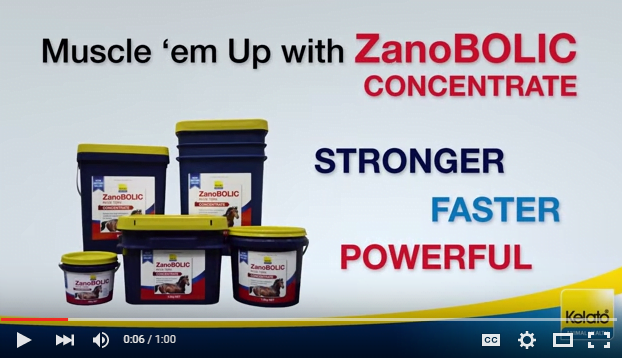Feeding for Strength – Why you Need Supplements for Power, Strength and Topline Does your horse need body strength? Leg strength? Energy? Power? Read on to see how your horse can benefit from supplemented chelated minerals. Want body and leg strength? In order to gain strength and muscle, your horse needs to have an adequate diet and training regime. The training regime needs to be focused on the major muscle groups and needs to involve a well-designed plan that gradually increases the load on the muscles and the cardiovascular system. Nutrition plays a vital role in building muscles, strength and topline. Muscles are made up of small fibre like structures that are created from protein and these are called fibrils.No protein equates to no muscles. Muscles are powered by the oxidation of carbohydrates (energy) and chemical reactions that produce ATP (Adenosine Triphosphate). Without these crucial nutrients the horse will not produce the energy required to power the muscles à contractions will be slow and power will reduce significantly.
Increasing power, muscles and topline In order to create power and grow the muscles, the correct amount of protein and carbohydrates needs to be fed. However, for the body to have the ability to convert the protein into muscles and the carbohydrates into energy there are a wide range of vitamins and minerals that are crucial to this process. Particular vitamins and minerals have been proven to be essential for life and cannot be made by the horse. Vitamins are produced by plants. In the horse’s natural environment this is ideal, however no performance horses are in their “natural environment” as they are being ridden by us and are stalled periodically and go through periods of stress such as competition, training, travelling. The added demands we place on the horse call for a need for supplementation. In 1936, the American Agriculture department released a paperback saying the soil provides no minerals to plant growth, due to the minerals being completely void in the soil. Plants don’t have the ability to make minerals and neither do horses. Therefore to prevent any diseases arising from a mineral deficiency we must supplement, not only to prevent disease from occurring but to gain power and strength. Horses benefit from supplements.
To learn more about increasing power, muscle and topline, click below 
Choosing the right mineral supplement There are many vitamin and mineral supplements on the market. Which one do you choose? Well the difference between them is that some have organic minerals and some have inorganic minerals. Inorganic minerals are in the forms of salts such as calcium carbonate and magnesium sulphate à carbonates and sulphates are “salts”. These forms of minerals are not readily absorbed by the horse. In fact the horse can only absorb approximately 1-15% of these minerals. Supplements that use inorganic minerals have large dose rates and are often very unpalatable for your horse. There is no point feeding something your horse can’t utilise. Organic minerals however are readily absorbed by the horse thereby reducing the dose rate and increasing the uptake of the mineral. If fed, inorganic minerals can only be utilised by the horse once they have been changed into a bio-available form for digestion to occur. This is a costly process in terms of energy and time to the horse.
Why are chelated minerals better? It is better to feed minerals that are already in a bio-available form such as organic minerals, also called chelated minerals. Chelated minerals are a compound that has a particular mineral which is bounded on both sides by an amino acid. These “chelates” have been proven to increase feed conversion efficiency, growth, reproduction and immune response. Using chelated minerals will reduce the dose size and as a consequence will also be more palatable. Minerals are crucial to the life of horses. Minerals are used as cofactors for processes to occur in the body. For example oxygen cannot be utilised without a mineral cofactor! It is important to note that minerals are not uniformly placed around the earth. They are deposited in large sites which are few and far between eg copper mines. Important Mineral Examples A few examples of minerals and their use to the horse are shown below.
- Calcium: important for muscle contractions. A deficiency of calcium will limit the frequency and strength of contractions within the muscle.
- Magnesium: 30% of the magnesium found in the body can be found in the muscle. The magnesium requirement for heavy exercise is estimated at: 0.03g x kg BW eg 15grams per day for a 500kg horse.
- Iron: plays a critical role in oxygen transport and cellular respiration. The body of a 500kg horse contains about 33 grams of iron. If you are feeding 33 grams of an inorganic form of iron, this will not fulfil a 500kg horse’s iron requirements. Lethargy and anaemia may result.
- Thiamine: involved in carbohydrate metabolism. Feeding carbohydrates alone will not ensure that energy will be produced.
Chelated minerals are already in a bio-available form and are able to be readily absorbed from the gut. In order for you to get maximum potential out of your horse, a correct diet needs to be fed.
To learn more about chelated minerals, watch the video below. 




